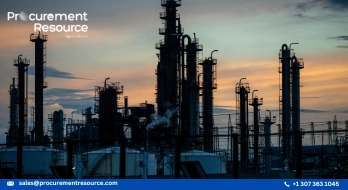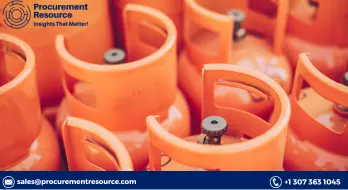Liquefied Petroleum Gas (LPG) At Price Benefit as Global Naphtha Demand Sinks Due to Faltering Petrochemicals - IEA
.webp)
The International Energy Agency (IEA) stated on Wednesday that the growing demand for naphtha had declined worldwide as a result of a squeeze in petrochemical margins in the chemical industry. The decline is caused by a rise in crude oil prices and an upper hand in the cost to produce naphtha from liquefied petroleum gas (LPG), a contending feedstock.
According to the IEA's July Oil Market Report, an abrupt decline in demand for naphtha came to notice in March. The drop was lower than March 2021 and February 2021 by 480,000 tonnes/day and 370,000 tonnes/day, respectively.
As per the Paris-based organisation, there will be a 220,000-tonne/day decrease in naphtha demand in 2022.
The IEA stated that after eighteen consecutive months of yearly profit, Long, a pillar of oil demand growth, naphtha use falters.
Additionally, it was mentioned that this change in direction is a result of the squeeze on petrochemical profitability, rivalry among feedstocks, and the effects of China's lockdowns and Russia's international isolation.
Fixed petrochemical industry EXPANSIONS.
The demand for naphtha is witnessing a plunge in 2022 after years of growth supported by the seemingly inevitable global expansion of the petrochemical sector.
As a matter of fact, it was noted that only naphtha LPG and its feedstock, ethane comprised the significant products for which usage expanded between 2020 and 2021. The IEA forecasts that by the close of 2021, the naphtha requirement will have increased by 8% from 2019.
Despite this, the IEA saw a decline in naphtha demand of 1.1 million barrels per day (14.2 percent of overall demand and more than double the average seasonal dip) between January and May 2022.
The decline in demand and the strange conjunction of high crude oil prices has led to the collapse of naphtha to newer lows.
A mix of high raw material feedstock prices due to crude oil increases and low downstream demand due to continuing strict lockdowns in China in Q2 to minimise the effects of a pandemic have hit the margins of Asian olefins producers.
An overwhelming and increasing growth rate of 71% of the total global naphtha consumption arose from Asia in Q1 this year.
The IEA stated that the local producers and those in neighbouring nations, many of which rely on polymer exports and intermediates to China, had been poorly affected by the recent lockdowns in China. The organisation further stated that ethylene and propylene shipments to China in April fell by fifty percent year on year.
The Q2 estimates lowered China's naphtha demand by 11% compared to Q1, compared with a usual decline in the beginning years of 4%.
Despite that, the increasing demand for European naphtha has also plummeted in Q2, with estimations by the IEA that demand was 100,000 bbl/day lower year on year, a decrease of 9.3% in April.
On the other hand, LPG consumption in Europe fell by 40,000 bbl/day in April year over year.
According to the IEA, naphtha cracks started to decline and moved closer to parity with LPG as a result of already declining demand in Asia and Europe.
Globally, the biggest naphtha exporter in Russia. Naphtha prices rose along with crude oil, while LPG has slowly increased as an aftereffect of the Ukraine invasion.
Despite that, the IEA expressed that after the drop in naphtha cracks, Russian naphtha exports have recovered recently, while China's economy has recovered after lockdowns.
Because of this, the IEA anticipates a gradual improvement in naphtha demand in the forecast period of the second half of 2022 and 2023.
After 2022's predicted to fall, naphtha consumption would probably increase by 270,000 barrels per day in 2023, hitting 7.1 million barrels per day globally.


-plant,-a-inr90-crore-project.webp)
